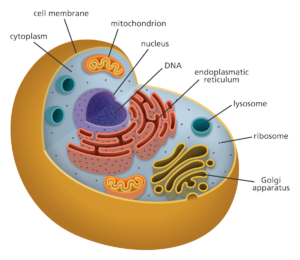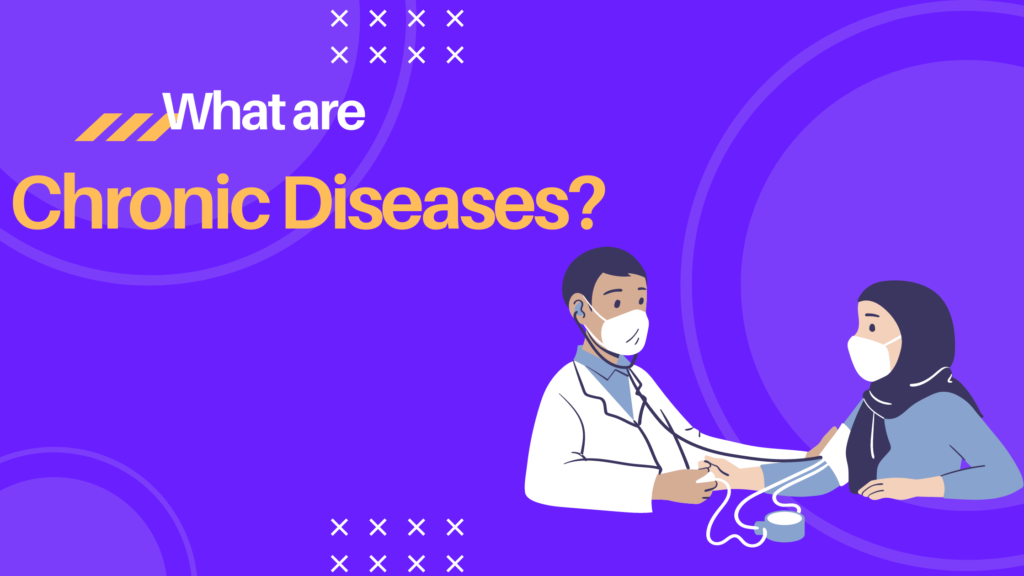Table of Contents
Introduction
If you ask me what are chronic diseases then i can say that they are long-term health conditions that can last for months or even years. They are often caused by a combination of genetic and environmental factors and behavioral risk factor, nutritional deficiency or cellular dysfunction. Chronic diseases can be managed, but they cannot be cured. Some of the most common chronic diseases include heart disease, cancer, stroke, diabetes, and arthritis.
Chronic Diseases like heart disease, diabetes, and cancer affect almost 125 million Americans. According to CDC chronic diseases are the leading cause of death in the USA. Almost 70% of the deaths are due to chronic diseases. They add to rising health costs. These diseases are preventable. Still, we are not successful in controlling them Are we still going to suffer from chronic diseases?
Why we are not able to control them? If we put some effort into understanding the root cause of the problem, then we hope to find the right solution. Our body has the potential to keep itself healthy for almost 100 years.
What is disease?
We can define disease as:
“A disease is a condition that deteriorates the normal functioning of the cells, tissues, and organs”.

Our body is made up of 70 trillion cells. Each cell is independent living machine which does the function assigned to it. Different cells are assigned functions depending upon the system to which they belong.
So, it is the alteration of the functioning of the cells, tissues, or organs that causes some discrepancy and results in some symptoms and health problems.
The disease can also be defined as:
“Any dangerous divergence from a functional or normal state of an entity.”
Cells are basic building blocks of all living things. A group of cells forms tissues and a group of tissues forms an organ. Cells perform important functions in the body, specific to each cell. If they are unable to perform their function properly, the disease develops. Diseases are often thought of as medical conditions that are characterized by their signs and symptoms.[ref: https://medlineplus.gov/genetics/understanding/basics/cell/]
Factors that cause the disease
There may be many factors that cause the disease. Or there could be a single cause.
How do we know that we have a disease? when we have a disease we have some symptoms, such as headaches, cough, cold, or weakness. In almost all diseases symptoms are shown immediately after we are stuck with the disease.
However, in the case of chronic diseases, the disease starts at an early age but symptoms are felt only after several years. In the initial stages though we are suffering from chronic diseases we feel we are health. Only after the disease is diagnosed we realize that we are suffering from some chronic diseases or sometimes multiple chronic disease.
So we cannot say that I am healthy if I do not have any symptoms.
There are mainly two categories of diseases that affect human beings. These are acute diseases and chronic diseases.
What is an Acute Disease?
A few diseases occur suddenly and last for a few days. The symptoms are seen immediately. These are known as acute diseases, such as the common cold and fever. This condition can be treated with medical treatment or on its own. Many times, acute diseases turn chronic if they continue to persist.
Acute diseases can occur throughout all body systems. Some examples are: an asthma attack is acute which later turns chronic. Strep throat, broken bones, appendicitis, influenza, pneumonia, etc. are some of the acute diseases. Typhoid, malaria, and diarrhea are other examples of infectious diseases. The use of antibiotics and other drugs is very useful in curing acute diseases. These so-called Acute diseases last for a very short duration of time < 6 months.
What are Chronic Diseases?
Some diseases that occur over a period of time and last longer, or even for a lifetime are called chronic diseases. Generally, if a disease lasts for more than three years it is called chronic disease. Initially, the symptoms are not seen. Even if the symptoms appear, the symptoms are very mild. We take for granted that we are healthy and nothing is wrong with us. We miss the opportunity to prevent it from progressing further. A chronic disease progresses slowly and damages the body severely. It might sometimes be fatal, examples being a heart attack or a stroke.[ref: Chronic diseases https://www.physio-pedia.com/Chronic_Disease]
For example, MedicineNet describes a chronic disease as, one lasting 3 months or more, by the definition of the U.S. National Center for Health Statistics. Chronic diseases generally cannot be prevented by vaccines or cured by medication, nor do they just disappear. According to Wikipedia, a chronic condition is a human health condition or disease that is persistent or otherwise long-lasting in its effects or a disease that comes with time. The term chronic is often applied when the course of the disease lasts for more than three months.
The risk factors involved in such diseases may be age, gender, an unhealthy lifestyle, etc. A chronic disease may or may not be cured by medications. It cannot be prevented by vaccines as well. Hypertension, arthritis, diabetes mellitus, and psoriasis are some of the chronic diseases.
However, chronic disease can be managed or controlled by:
- Physical activity
- Healthy diet
- Giving up on smoking
- Controlling alcohol consumption
A chronic illness is very stressful. The stress obstructs and delays your recovery.
Examples of Major Chronic Diseases
The major chronic conditions are Heart Disease, Stroke, Lung Cancer, Type-2-diabetes, Arthritis, Osteoporosis, Asthma, Chronic obstructive pulmonary disease (COPD) & Chronic kidney disease
The four leading causes of NCD death are cardiovascular disease, stroke, and hypertension (45%). Chronic respiratory disease (22%) is the most common, followed by cancer (12%) and diabetes (3%). These chronic diseases are increasing every year.
Diabetes mellitus is a disorder in which the body does not produce enough insulin, causing blood sugar (glucose) levels to be abnormally high. [ ref: Diabetes Mellitus (DM) https://www.msdmanuals.com/en-in/home/hormonal-and-metabolic-disorders/diabetes-mellitus-dm-and-disorders-of-blood-sugar-metabolism/diabetes-mellitus-dm]
Arthritis is the swelling and tenderness of one or more joints. The main symptoms of arthritis are joint pain and stiffness, which typically worsen with age. The most common types of arthritis are osteoarthritis and rheumatoid arthritis.[Ref: Overview: https://www.mayoclinic.org/diseases-conditions/arthritis/symptoms-causes/syc-20350772]
High blood pressure, also called hypertension, is blood pressure that is higher than normal. Your blood pressure changes throughout the day based on your activities. Having blood pressure measures consistently above normal may result in a diagnosis of high blood pressure (or hypertension).[ref: High Blood Pressure Symptoms and Causes https://www.cdc.gov/bloodpressure/about.htm]
The term “heart disease” refers to several types of heart conditions. The most common type of heart disease in the United States is coronary artery disease (CAD), which affects the blood flow to the heart. Decreased blood flow can cause a heart attack. [Ref: About Heart Disease: https://www.cdc.gov/heartdisease/about.htm]
High cholesterol is closely linked with many other medical problems. That means it can cause some serious problems to start (like coronary artery disease). But it can also happen as a result of other diseases, especially ones that trigger inflammation in your body (like lupus). People with high cholesterol often develop high blood pressure as well. [RF: high Cholesterol Diseases https://my.clevelandclinic.org/health/articles/11918-cholesterol-high-cholesterol-diseases]
Cancer is a group of more than 100 different diseases. It can develop almost anywhere in the body. How does cancer begin? Cells are the basic units that make up the human body. Cells grow and divide to make new cells as the body needs them. Usually, cells die when they get too old or damaged. Then, new cells take their place. Comparison of Acute and chronic diseases [Ref: What is Cancer https://www.cancer.net/navigating-cancer-care/cancer-basics/what-c%C3%A1ncer]
Table:Difference between acute and chronic diseases
| Sr No | Acute Diseases | Chronic Diseases |
|---|---|---|
| 1 | Symptoms appear suddenly | Symptoms appear slowly. The disease starts at an early age. As there are no symptoms we feel we are healthy. When the symptoms appear we realize that we are having a disease. There is no cure. They can be managed but worsen with time |
| 2 | Can be treated easily with medicines | There is no cure. They can be managed but worsen with time |
| 3 | Last's for a short time | Last's for a longer time, even lifelong |
| 4 | Examples are flue, cold, fever, malaria, typhoid | Diabetes, arthritis, asthma, heart disease, cancer, etc |
Comorbidity of Chronic Diseases
Comorbidity refers to the occurrence of two or more conditions or diseases in a person at one time. Chronic conditions often occur together.
In Australia, like many nations, the rate is higher for:
People aged 65 and over (60%) compared with people aged 0–44 (9.7%)
Females (25%) compared with males (21%)
People in the lowest socioeconomic areas (30%) compared with those in the highest socioeconomic areas (19%)
People living in Regional and Remote areas (28%) compared with those in Major cities (21%).
The most common comorbidity is arthritis with cardiovascular disease (7.4%), followed by arthritis with back pain and problems (5.1%), and back pain and problems with cardiovascular disease (5.0%). Some chronic diseases may act as a precursor or as a risk factor for other chronic diseases. eg diabetes is known to be a risk factor for developing cardiovascular disease; asthmatics are at greater risk of developing chronic obstructive pulmonary disease later in life.

